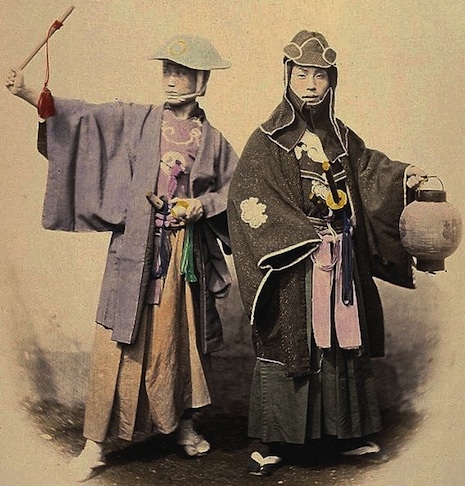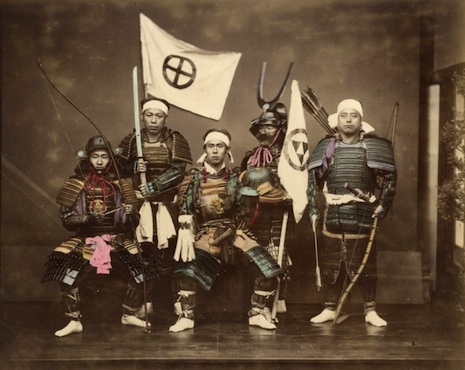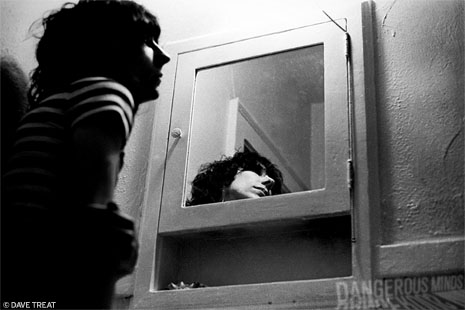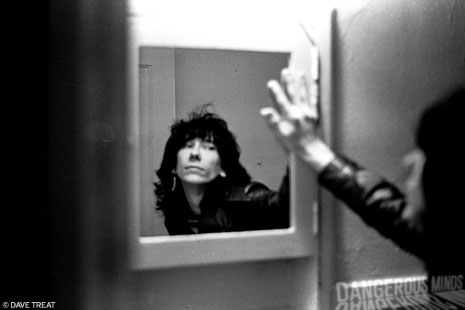
“In McMembrance”
Derek Erdman is currently one of my favorite American artists. It’s not just that I connect with his absurdist outsider pop images, but it’s his entire philosophy about producing art which is accessible—both figuratively and literally—that draws me to his work. In addition to being a highly prolific painter, Erdman is an infamous prankster, as well as the mastermind behind “Rap Master Maurice,” who, for $17, will make a “revenge rap” phone call for you. Erdman also happens to be a receptionist at the venerable Sub Pop record label.
His website contains hundreds of works for sale, and, incredibly, also includes a link for price haggling!
After the recent purchase of a lovely portrait of a certain 1970s, Flavor-Aid-serving cult leader, I had the pleasure of talking to Derek about his work and refreshingly anti-classist approach to the “art world.”
I can’t be the first person to have made this joke, but since you’re an artist and you also work at Sub Pop, does that make you a “Sub Pop artist”?
Derek Erdman: I reckon that’s the case, yes. I’d very much love to have a SP catalog number for one of my paintings one day, that’s kind of a dream. Dean Whitmore’s (Sub Pop Sales Department) daughter has a catalog number. Art Director Jeff Kleinsmith’s wedding has a catalog number. Founder Bruce Pavitt’s daughter has one. It’s wild over at Sub Pop. Wiiiiiiiiild.
Does your “day job” allow you enough time to be such a prolific artist? Do you still “need” a day job at this point in your career?
DE: I started working at Sub Pop because painting all day at home was really lonely. At times I totally forgot how to communicate with people. In a way, I’d say I’m only just now acclimating into office life. I have a feeling I’m pretty annoying in the office, like the guy who bursts into a room wearing a beanie and interrupting everything. My co-workers have great patience, but also a penchant for losing their bus cards, which I have to replace. I love my role there, and in a way I can make art while at work, or at least have ideas that I can go home and make into paintings. That place also encourages pranks, which is nice. I could hustle enough money to live without it, but Sub Pop allows me to get my teeth fixed and eat foods that aren’t black beans and rice. Plus having a schedule is a good thing for me, otherwise I’d just stay up for 36 hours at a time in some kind of manic flurry. And that hardly ever ends well.

“She Made Them Realize”
I mentioned the word “prolific” in the last question, and that’s no understatement. How many paintings would you say you’ve done? There seem to be hundreds on your site.
DE: I’d say I’m between 5,500 - 6,000. Those aren’t Steve Keene numbers, but I’m cool with that. I like naps.
Your work seems equally inspired by the Pop Art movement and the Outsider Art movement. If you were to “art-historian” yourself, under what category would you classify Derek Erdman’s work?
DE: Oh jeez, I dunno. Art Garbage? The Vague Sincerity Movement? Old Country Buffet?
When I first saw your paintings, I was reminded a bit of the art of Sam McPheeters. Are you familiar with his work? I also got a Howard Finster vibe. Are there any artists who inspired or informed your style, or do you think that these sort of outsider “lowbrow” styles develop of their own accord? Is it fair to use the term “lowbrow”?
DE: Lowbrow is fine, I don’t take offense to that. I find coolness or being fancy to be pretty unappealing. I probably couldn’t be an art museum grant-having, complicated-explanation artist if I tried. My style mostly comes from the clip art of Tom Tierney , my work ethic from being raised in Cleveland, Ohio. It’s rough and tumble there. If you don’t work hard, you end up all rusty and alcoholic. I love Sam McPheeters, his sense of humor is perfect. I was in a band for a week that did Dead Milkmen
, my work ethic from being raised in Cleveland, Ohio. It’s rough and tumble there. If you don’t work hard, you end up all rusty and alcoholic. I love Sam McPheeters, his sense of humor is perfect. I was in a band for a week that did Dead Milkmen covers in college and we opened for [Sam McPheeters’ ‘90s band] Born Against
covers in college and we opened for [Sam McPheeters’ ‘90s band] Born Against in a pizza shop basement. At the beginning of the show somebody made the declaration that there shouldn’t be any anti-religious statements during the show, I think there was a then-current controversy. So in between Dead Milkmen covers we made up a song called “Fuck the Church.” God, we were the worst. I later made a fake “distro” newsletter listing bootlegs of a ton of Born Against and Universal Order of Armegeddon
in a pizza shop basement. At the beginning of the show somebody made the declaration that there shouldn’t be any anti-religious statements during the show, I think there was a then-current controversy. So in between Dead Milkmen covers we made up a song called “Fuck the Church.” God, we were the worst. I later made a fake “distro” newsletter listing bootlegs of a ton of Born Against and Universal Order of Armegeddon shows, you know, like Grateful Dead tape trader style of dates and different cities. I sent a copy of it to Vermiform [Records] and whoever got it really didn’t like that joke. Moss Icon
shows, you know, like Grateful Dead tape trader style of dates and different cities. I sent a copy of it to Vermiform [Records] and whoever got it really didn’t like that joke. Moss Icon though, holy shit.
though, holy shit.

“Nighthawks in the Bathroom”
What is the typical process involved in doing a painting?
DE: Usually acquiring different sizes of wood and painting them different colors. Then I’ll eventually have an idea that seems vague enough to have multiple meanings, and paint them onto the wood with house paint. I like to watch 48 Hours type true crime murder mystery TV shows on YouTube while I paint. There’s a really good documentary about the “Paul is Dead” controversy called The Winged Beatle. It’s so dumb. I love the difference between stupid and dumb. Sometimes my paintings are dumb, but I hope for them to never be stupid.
I first became aware of your work from the Can’t Kids Brushes Touches Tongues album cover, but I think I was late to the game. What was your first “big break” in the art world?
album cover, but I think I was late to the game. What was your first “big break” in the art world?
DE: It doesn’t really feel like I’ve ever had that. Sick shit has happened and I’ve done some bigger projects that I’ve been really proud of, but there hasn’t been a particular instance that I can recall. I did have a summer where a bunch of friends and I were pretty into cough syrup. That helped a lot, I was kind of an asshole before that summer. We called it the Summer of Tuss. 2003. The best year of my life. That’s not really true.
Among your massive online portfolio, one can see that your work seems to be divided between “serious” portraits and pieces that inject absurd humor. Do you prefer to do work with intentional humor?
DE: Humor is really important to me, yes. Even if it’s a joke that only two people will get (see the above Born Against/Vermiform story). Laughing is probably my favorite thing. Unfortunately, I feel that life is ultimately bleak, a giant overwhelming sadness, and that’s a ripoff. The best parts are the laughs in between, but then everything always flutters back to despair. Geez, I had no idea I even thought this before I typed it.

“Hitler - Cross Eyed and Chubby”
Correct me if I’m wrong on this. Did I read somewhere that you stopped doing Bill Cosby portraits after the dozens of rape allegations that came out against him? If I’m getting that correct, you’re still producing portraits of guys like David Berkowitz and Hitler. How do you decide what’s OK and not OK for subject matter? Is anything taboo?
DE: People stopped ordering Bill Cosby paintings, I didn’t stop making them. Like a lot of my early paintings, I would never remake them for myself because they’re pretty boring now. But shit, if somebody ordered one, I’d make it. I’m not the boss of people, but I’ll gladly have their money. Plus, that’s a real easy painting to make.
I think being mean is a taboo. But there’s a lot of cultural sensitivity today that’s painting entertainment into a corner. Sure some of it is warranted, but for the most part, if somebody doesn’t like something: fuck ‘em.
Fine art is often reserved for the well-off. The last time I purchased one of your works, I thanked you for being so “affordable,” and I also thanked you for the drill holes, which made the work easy to hang without going through the expensive process of framing. You told me that it was part of your philosophy of art being “for the people,” which REALLY resonated with me. Would you care to expound on that a little bit?
DE: I’m anti-classist at heart, so I’d be really disappointed in myself if the things that I made became inaccessible to everyday people. I also really like the idea of paintings as decoration that could go unnoticed, but once inspected could have a subtle message. So, you know, just hanging in a kitchen or bathroom in low light. Framing seems elitist to me. It’s so expensive. A proper frame will set you back much further than a perfectly good piece of art, and that’s fucked. I’m not trying to change the world with these opinions though, that’s just my way of thinking. I decorate my house in my own paintings, I guess that says something!

“Denise Eckersley”
As a working businessman who happens to be an artist, thematically, what “sells the best”? I’m going to guess “cats,” but I’d love to be proven wrong.
DE: Bears on old reclaimed windows in different colors. You can buy the windows for $5, clean them up and then sell them for $120 all day long. Otherwise yes, cats. Pet portraits.
Is there anything you haven’t painted because you’re too intimidated to tackle it?
DE: [No.] Fuck em’!
Here is a selection of Erdman’s work. There are literally hundreds more amazing pieces on his site: derekerdman.com.

“The Woman With Bird Earrings”

“World War 2/ Bay of Pigs/ Desert Storm”
More Derek Erdman after the jump…








































